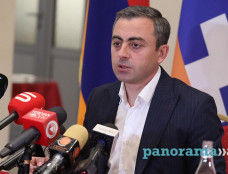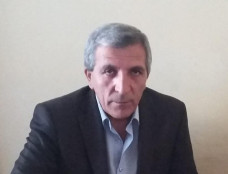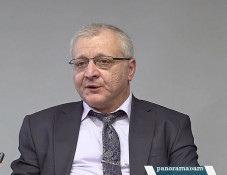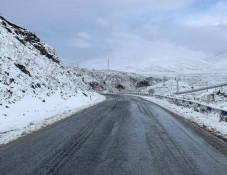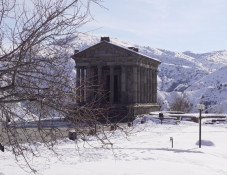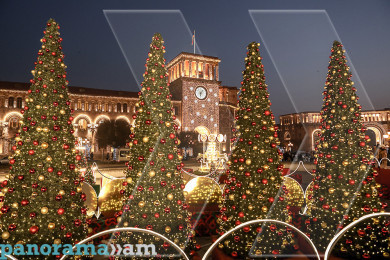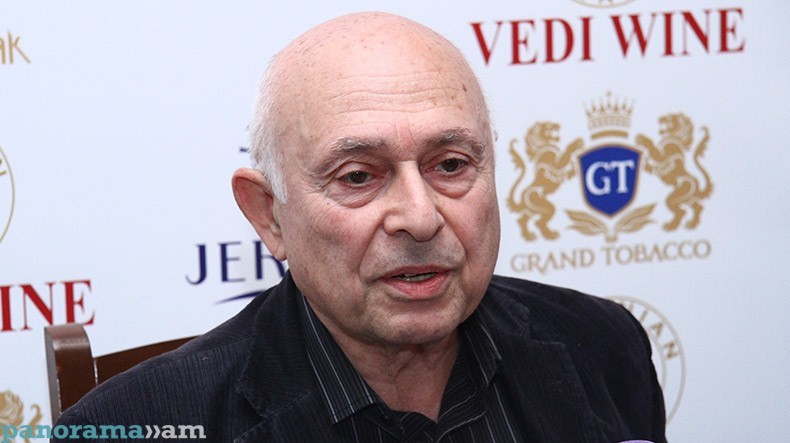
Rouben Galichian displays Azerbaijanis appropriating written culture and famous individuals of neighbouring peoples
The Azerbaijani arsenal of falsifications has yet another weapon: announcing the historians, scholars, writers, who were born in the territory of Azerbaijan or wrote about those lands, as having ‘Azerbaijani origin’ irrespective of their ethnic origin. Famous cartographer Rouben Galichian describes some of those individuals in his book Historical and Geographical Falsifications of Azerbaijan, a historical, cultural and cartographical research based on a detailed analysis backed by documentary evidence.
First, Galichian cites the Azerbaijani sources’ claims that Movses Kaghankatvatsi (or Daskhurantsi) is an ‘Azerbaijani historian.’ He notes that the Azerbaijani false sources have become so widespread and look so reliable that even Audrey Altstadt, an American historian, references them describing Movses as ‘the Albanian historian Moisei Kaghankatli.’
Next, Galichian writes about Nizami Ganjavi (1141-1209), a famous Persian poet and thinker born in the city of Ganja, now located inside the Azerbaijani territory, a circumstance which the Azerbaijanis use to announce him an ‘Azerbaijani poet.’ The 500 manat banknotes issued from 1993 to 2006 by the Azerbaijan’s Central Bank carried the portrait of Nizami, and in 2008, on the 800th anniversary of his death, the bank issued 100 manat memorial gold coins.
He also mentions Nasir al-Din Tousi (1201-1274), a well-known Persian scientist, mathematician, astronomer and scholar born in the eastern Persian city of Tous in the province of Khorasan. “In 1259, he constructed an observatory for the Seljuk Hulagu Khan in the city of Maragha. The foundations of the structure are still there. Taking advantage of the fact that Tousi was in Maragha, which is situated in Atrpatakan (or South Azerbaijan, as per the Azerbaijani authorities’ claims), they consider him Azerbaijani, as well,” Galichian writes.
In the foreword to the translation of A Concise History of the Region of Aguank, a book by Esai Hasan Jalalean, the Azerbaijani academician Zia Buniatov presents him as an Albanian historian. He passes over in silence the fact that Esai descended from the family of the Armenian Hasan Jalalean meliks (princes) of Khachen, several members of which, including Esai, were catholicos at Gandzasar. Esai calls himself an Armenian and pays a special attention to the Armenians and their fate in his book.
Next, Galichian notes Hussein Bahjat-Tabrizi (1906-1988), a poet from Atropatene better known as Shahriar. He was born in Tabriz, in the Persian Atrpatakan, and studied at the University of Tehran. However, given that he was born in Atrpatakan, the modern Azerbaijani scholars easily call him ‘Azerbaijani.’
To be continued.
Born in Tabriz, Rouben Galichian is a descendant of refugees from Van who survived the Genocide. He received scholarship and studied engineering at Aston University, Birmingham (UK). Since in 1981, he started to study the rich cartographical heritage in the libraries of the UK and other European countries. His first research, Historic Maps of Armenia (in English), was published in 2004. It was a collection of maps from various libraries and museums in the world, where Armenia was noted, beginning from the 6th century to the present times. His second book, Armenia in World Cartography, was published in Yerevan in 2005. The research ‘Countries South of the Caucasus in Medieval Maps. Armenia, Georgia and Azerbaijan’ (in English and Armenian) was published in 2007. The book The Invention of History (in English) was published in 2009.
In his book Historical and Geographical Falsifications of Azerbaijan, published in 2013, the author details the reasons, aims and methodology of the falsification of the history of Azerbaijan and the countries of the region.
Related news
- Rouben Galichian references Medieval Christian travellers and chroniclers’ evidence on Armenian presence in Caucasus
- Rouben Galichian exposes Azerbaijani scholars’ falsifications of their own sources about Armenia and Armenians
- Rouben Galichian references C9-14th Islamic sources about Armenia and Armenians
- Rouben Galichian compiles evidence on Armenian presence in Caucasus from Greco-Roman sources of C5-1 BC
- Rouben Galichian refutes Azerbaijani theory about ‘Armenians being newcomers’ to South Caucasus
Newsfeed
Videos







